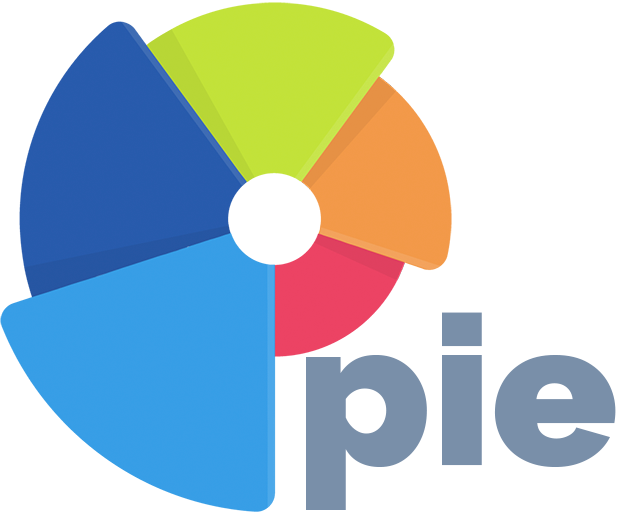Your Credentialing Still Runs on Spreadsheets. But At What Cost?
Credentialers know their spreadsheets. But when you’re juggling multiple payors, locations, and deadlines, manual tracking might be holding you back. Here’s what that really costs—and what a better approach could look like.

The executive team wants to know why you can't bill.
They don’t care how credentialing works. They don’t want to hear about Medicare’s 855I processing times or why your delegated contract with a payor is in limbo. They want revenue. A clean report. A green light.
But you? You’re in the weeds. And those weeds are tall.
You’ve got a spreadsheet for each group. Another for providers. A master tracker showing PAR status across different tax IDs and specialties. One that logs location licenses and Medicaid IDs. Another one for CAQH credentials. Some of them are ten tabs deep. Some have notes from credentialers who left two years ago. Some are broken, and you don’t even know it yet.
And that’s just credentialing.
We’ve worked with credentialing teams for years—teams juggling enrollments across dozens of states, trying to keep pace with hiring surges, organizational changes, and surprise payor demands. And you know what’s wild? For all the tools and tech in healthcare, most credentialing still runs on spreadsheets.
And it’s costing you.
The Spreadsheets Are Still Winning
If you’re still doing credentialing out of Excel, you’re not alone.
A 2024 analysis by Grand View Research found that the growing demand for healthcare credentialing software is being driven in part by the industry’s continued dependence on manual and error-prone systems, including spreadsheets and fragmented workflows.
This makes sense when you think about how most credentialing operations are built. They don’t start with a big system. They start with someone like you—someone capable, resourceful, and tasked with “figuring it out.” Spreadsheets make sense... until they don’t.
What's the Real Cost?
Let’s talk about what you actually lose when credentialing is stuck in scattered files and brittle systems:
- Time. Updating status across dozens of worksheets can eat up entire workweeks. One credentialer told us it used to take a full week to give the execs a status report.
- Accuracy. When information is duplicated across multiple places, it’s only a matter of time before something gets missed. One provider. One payor. One missed effective date. Suddenly, you’ve got revenue on hold and claims denied.
- Visibility. Execs want answers. “Which providers are still out of network?” “When will this new site be fully credentialed?” Without clean data, you're stuck giving partial answers—or worse, guessing.
And here’s the thing: all of these lead back to the same question from leadership...
Can we bill?
Credentialing doesn’t feel urgent until billing stops. And when it does, everything else becomes secondary.
“I Just Want to See Everything”
Credentialers managing dozens—or even hundreds—of providers are often doing so with a tangle of disconnected spreadsheets and legacy processes. One tracker for CAQH, one for locations, one for payor status by state. None of it linked. None of it easy to navigate.
What they really want is simple:
- A single view of all their groups, providers, and enrollments
- Quick access to effective dates, submission status, and gaps
- A way to keep everything in sync without manually copying and pasting
They want to log in, run a filter, and see it. That’s it.
It's Not Just About Automation — It's About the Right Kind
There’s nothing wrong with automation. In fact, the right automation can be a game-changer—especially when it cuts down on repetitive tasks, flags issues before they become problems, and helps you stay organized without chasing emails.
The same goes for AI. When used well, it can help spot trends, identify bottlenecks, and keep credentialing teams ahead of the curve.
But automation isn’t helpful when it adds complexity or forces you into rigid workflows that don’t match how your team actually operates. That’s where many systems fall short—they focus on features, not fit.
Credentialing teams don’t need technology for technology’s sake. They need tools that work the way they do—with room for real-world complexity, team collaboration, and clean visibility at every step.
But automation isn’t helpful when it adds complexity or forces you into rigid workflows that don’t match how your team actually operates. That’s where many systems fall short—they focus on features, not fit.The same goes for AI. When used well, it can help spot trends, identify bottlenecks, and keep credentialing teams ahead of the curve.There’s nothing wrong with automation. In fact, the right automation can be a game-changer—especially when it cuts down on repetitive tasks, flags issues before they become problems, and helps you stay organized without chasing emails.
This Isn’t Just an Ops Problem
Credentialing delays don’t just frustrate the back office. They affect patients, providers, and your bottom line.
When a provider joins your group but isn’t credentialed yet, patients may be told they’re out of network. Others may be seen, but claims get denied. Sometimes it’s weeks or months before the issue gets noticed.
If you’ve ever had to refile claims, appeal denials, or explain to a provider why their paycheck is smaller than expected—you know how painful this can get.
It’s not just a headache. It’s a revenue leak. It’s an experience problem. It’s a compliance risk.
One Way Out: Clarity
You don’t need to boil the ocean. You just need to see clearly.
Start by asking yourself:
- Do we know which providers are enrolled today?
- Do we know which ones are missing effective dates?
- Can we easily filter by group, payor, or location?
- Can we report credentialing status without emailing five people?
- Can we tell which enrollments are stalled and why?
If the answer to any of those is “no,” it’s probably time for something better.
Not just to make your job easier (though it will). But to help your organization move faster. Bill sooner. Stay compliant. And stop fighting fires all day long.
What If Things Were Different?
Let’s walk through some of the problems credentialers face daily—and imagine what would happen if they weren’t problems at all.
Status updates take too long
You’re asked for an update on credentialing status across multiple groups, payors, and states.
What if you could search and filter everything—by provider, by group, by payor—and see where things stand without piecing it together across trackers? Wouldn’t it be better to answer those questions in seconds instead of hours?
Missed effective dates delay billing
A provider is credentialed—but the effective date still hasn’t come through, and no one noticed.
What if your system could surface those gaps for you? Wouldn’t that help prevent delayed billing or rework later on?
Expirables and revalidations get missed
You’re juggling expirables, reattestations, and revalidations—but it’s all managed in a calendar or a shared file.
What if those deadlines were tracked automatically, with reminders that came before the crisis? Wouldn’t it feel better to stay ahead, instead of scrambling at the last minute?
You’re buried in spreadsheets
You’ve got four or five different spreadsheets open just to understand one provider’s status.
What if all your data—locations, payors, groups, statuses, documents—lived in one place, connected and easy to manage? Wouldn’t that save hours of repetitive updates, copying, and second-guessing?
Billing wants answers you can’t give
Billing keeps asking for updates, and your answers are always “Let me check.”
What if you had a system that gave you clean, confident reporting at any time? Wouldn’t it be nice to finally feel ready for those conversations—instead of playing catch-up?
Scattered payor info creates confusion
You’re working across dozens of payors, and you need to remember which ones require a W-9, which use a portal, and which still want a fax.
What if you had a single, centralized place to store key payor info—phone numbers, instructions, turnaround estimates, quirks, and contacts? Wouldn’t it be easier to train new staff, reduce mistakes, and stop hunting for emails?
You don’t know if this delay is normal
You’re not sure if a payor is taking too long—or if this is just how long it usually takes.
What if you had visibility into average timelines by payor, so you knew what to expect—and when to escalate? Wouldn’t it help you set better expectations with leadership and providers?
You’re tracking too many moving parts
You’re trying to track dozens (or hundreds) of active credentialing projects, and the complexity keeps stacking.
What if you had a clear project view for every enrollment, revalidation, or update—organized by provider, payor, and state—so nothing slipped through? Wouldn’t it be easier to stay proactive instead of reactive?
One provider, many places
One provider works across multiple locations, tax IDs, and specialties.
What if you could manage that complexity without creating duplicate records or disconnected files? Wouldn’t it give you a better handle on what still needs to be done—and where?
Software That Respects the Spreadsheet—and Goes Further
Let’s be honest: for a lot of credentialers, spreadsheets aren’t the problem. They’re the comfort zone. The control center. You know how to make them work. You’ve probably built dashboards, dropdowns, even formulas that rival the best automation tools.
Some of you reading this might be spreadsheet power users. Maybe you’ve even built your own credentialing system—something clever and custom that works just right for your workflow. If so, more power to you.
But for most teams? It’s not that easy.
Spreadsheets can’t talk to portals. They can’t auto-update expirables, track revalidations across hundreds of enrollments, or tell you what’s holding up a submission. They don’t know what’s missing—and they don’t tell you when it’s time to act.
A system built for credentialers—by credentialers—shouldn’t force you to abandon what you’ve built. It should feel familiar. But it should also go further.
It should give you the spreadsheet’s flexibility and the power of automation.
It should let you filter, sort, and pivot—but also alert, track, and escalate.
It should meet you where you are—and lift the load you shouldn’t be carrying alone.
Because credentialing has gotten too complicated to carry with copy/paste.
We know this work isn’t easy. And if you're carrying the weight of provider onboarding, revalidations, and enrollment management for a growing team across multiple states and payors — we see you.
pie works with credentialers like you every day. If you’re ready to offload some of the burden, gain visibility into the process, and partner with people who understand how this work really gets done, we’re here.




Comments ()